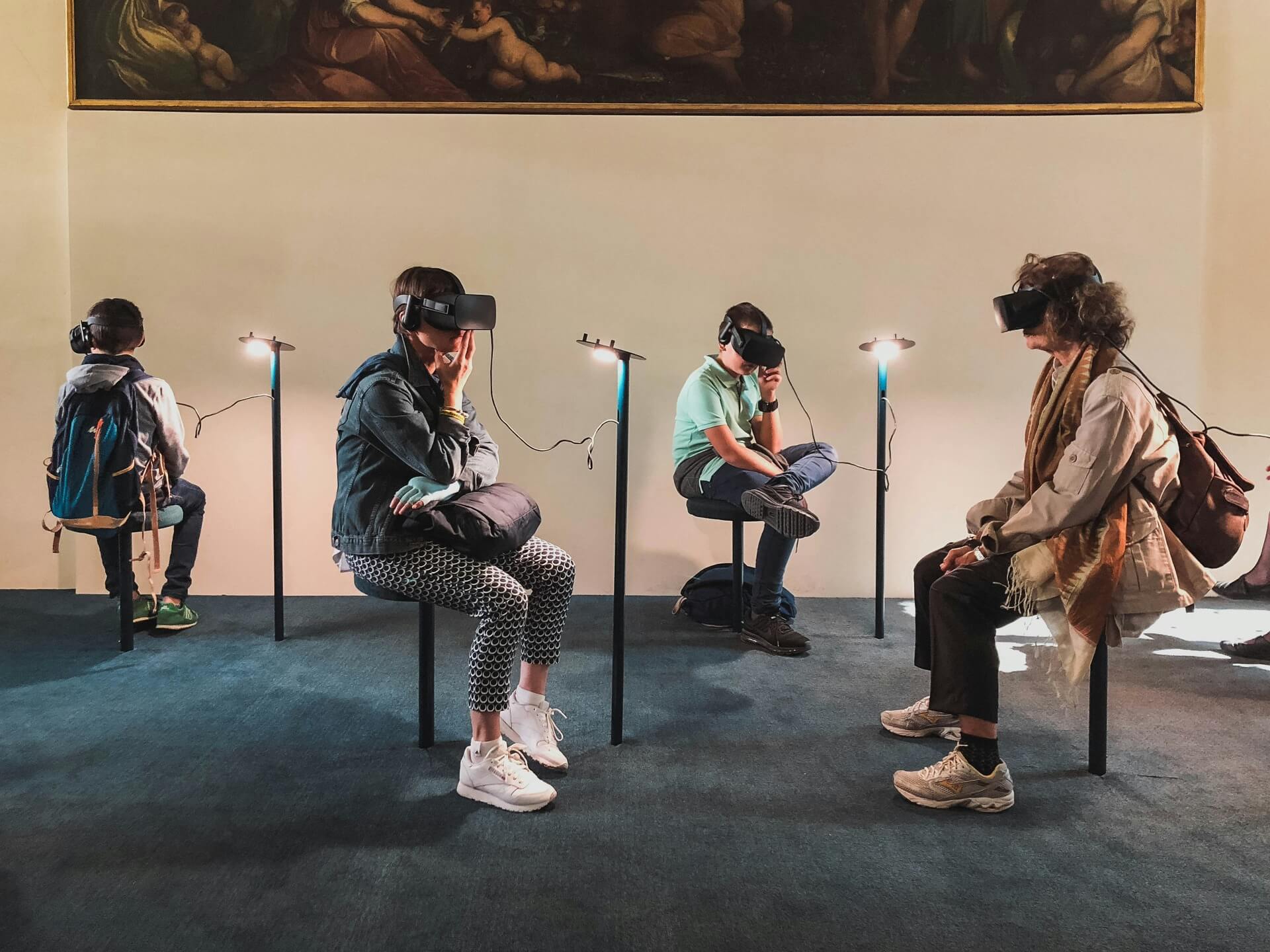
Immersive Experiences: Tips for Improving Their Sustainability
We are reader-supported. When you buy through links on our site, we may earn affiliate commission.
Immersive experiences — spanning virtual reality (VR), augmented reality (AR), and mixed reality (XR) — are revolutionizing how we learn, work, and engage with the world. From digital art installations to educational simulations and climate storytelling, these technologies invite audiences to step into other realities. Yet behind the wonder lies a growing need for environmental responsibility.
As immersive platforms scale, their energy use, hardware demands, and materials footprint can rise sharply. Fortunately, designing and deploying immersive content with sustainability in mind is possible. The following strategies highlight how developers, curators, and organizations can embrace immersive innovation while protecting the planet.
Choose Energy-Efficient Infrastructure
A critical yet often overlooked factor in sustainability is the energy infrastructure powering immersive content. Data centers that process real-time graphics, simulations, and high-resolution video are energy-intensive, usually drawing power around the clock.
To reduce this demand, operators are adopting energy-efficient cooling methods such as liquid and immersion cooling, which can cut data center energy use by up to 20-30% at the server level. Pairing these systems with renewable energy sources like solar or wind further reduces environmental impact.
The Information Technology Industry Council (ITIC) suggests companies explore power purchase agreements that support clean energy transitions and smarter grid integration. Together, these changes help immersive experiences run smoothly without relying on energy-heavy systems.
Extend Hardware Lifespan
Headsets, haptic gloves, and other immersive gear often become outdated within a few years, creating a cycle of waste and unnecessary replacement. Reducing e-waste starts at the design level. Modular hardware — where users can upgrade or replace individual components instead of discarding the entire unit — greatly extends device lifespan.
This approach reduces waste and limits the environmental cost of mining and manufacturing new materials. Offering refurbished units or trade-in programs adds another layer of circularity. When businesses keep products in use longer through thoughtful design and reuse options, immersive tech can grow without leaving behind piles of obsolete equipment.
Support Open Standards and Interoperability
Open standards across immersive platforms strengthen sustainability by making systems more flexible, upgradeable, and efficient. Standards like those developed by the International Organization for Standardization (ISO) or the International Electrotechnical Commission (IEC) help optimize how hardware and software work together while reducing energy waste.
Open and interoperable frameworks also reduce redundancy, eliminating the need to rebuild or reprogram experiences for each new device model. Instead of locking users into proprietary ecosystems that quickly become obsolete, developers can create scalable systems that last longer and require fewer updates. This adaptability benefits the environment and saves time and money.
Design Content With a Sustainability Message
Developers can use this influence wisely by incorporating stories and scenarios that promote eco-conscious decisions. Whether it’s a VR installation exploring the impacts of ocean plastic or an AR app that simulates sustainable farming, content that reinforces real-world environmental solutions tends to resonate deeply with users.
For instance, Japan’s practice of forest bathing or “shinrin-yoku” — originally developed by the Ministry of Agriculture, Forestry, and Fisheries and now prescribed by doctors globally — demonstrates how time in nature measurably improves well-being.
Although immersive media cannot replicate the biological benefits of forest environments, such as the absorption of stress-reducing phytoncides, it can spark the emotional curiosity that nudges users to step outdoors. In this way, immersive storytelling bridges digital experiences and real-world behavior change, encouraging more time in nature while raising awareness of its intrinsic value.
Plan Greener Venues and Events
Immersive experiences aren’t just digital. They often live within exhibitions, pop-ups, and museum spaces that bring content to life. Making these physical settings more sustainable begins with choosing venues that follow eco-conscious guidelines.
Facilities certified under the Leadership in Energy and Environmental Design (LEED) program use low-energy lighting and sustainable materials, as well as efficient heating, ventilation, and air conditioning (HVAC) systems.
Events can further reduce impact by incorporating motion-sensor lighting, reusable displays, and fully digital guides instead of printed materials. Museums and galleries are increasingly taking it further by installing green roofs, native landscaping, and rainwater harvesting systems. These design choices lower environmental impact and create immersive environments that feel more connected to the natural world.
Monitor, Measure, and Share Results
Accountability plays a key role in sustainable innovation. Just as immersive technology can collect data about user behavior, it can also track its own environmental performance. Developers and curators can install real-time dashboards that monitor electricity usage, hardware wear, and estimated emissions per session. These insights help pinpoint inefficiencies and reveal opportunities for improvement.
Sharing metrics publicly through sustainability reports or case studies also builds trust and encourages others in the industry to follow suit. Meaningful change begins with measuring what matters. Transparent data allows immersive creators to evolve their work responsibly over time.
Educate Users About Environmental Impact
Raising awareness around energy usage within immersive environments can further encourage responsible use. One way to do this is by building interactive prompts into experiences that show users how their actions relate to emissions or energy consumption.
For example, including real-time carbon dioxide savings in a sustainability-themed virtual tour can connect abstract metrics to meaningful outcomes. Developers can also create brief educational segments that teach users about energy-saving behaviors tied to device usage, such as unplugging headsets when not in use or dimming brightness settings.
Data from the Environmental Protection Agency (EPA) Household Carbon Footprint Calculator can serve as a basis for these calculations, offering credible benchmarks that enhance environmental learning.
Make Accessibility Part of Sustainability
Sustainable design is more than just about the environment. It also means making content inclusive and equitable. Ensuring that immersive experiences work for people of all abilities helps extend their usefulness, reach broader audiences, and avoid the need for redundant redesigns.
Following established accessibility standards — such as those supported by the CyberXR Coalition — allows immersive creators to support cognitive, auditory, visual, and physical needs from the start. Inclusive design improves content lifespan by ensuring more users can engage without additional layers of customization. In a sustainability context, this means fewer barriers, more engagement, and longer-lasting impact.
Building a Responsible Future for Immersion
Immersive technologies can do more than engage — they can inspire sustainable thinking. With thoughtful choices around infrastructure, hardware, design, and storytelling, creators can lower environmental impact while maximizing cultural and educational value.
Greener planning, accessibility, and ongoing measurement all help immersive experiences evolve responsibly. By weaving eco-conscious strategies into every phase, developers shape what people see in headsets and how they relate to the world beyond them.
Share on
Like what you read? Join other Environment.co readers!
Get the latest updates on our planet by subscribing to the Environment.co newsletter!
About the author

Jane Marsh
Starting from an early age, Jane Marsh loved all animals and became a budding environmentalist. Now, Jane works as the Editor-in-Chief of Environment.co where she covers topics related to climate policy, renewable energy, the food industry, and more.





